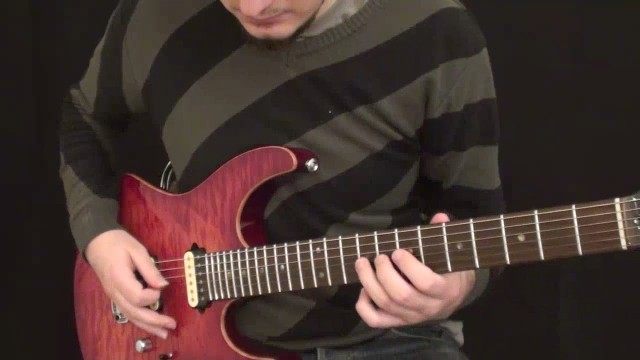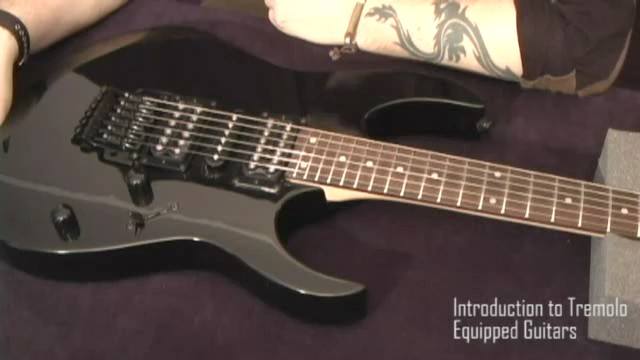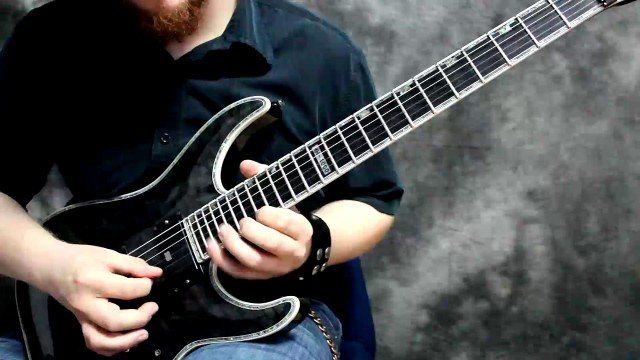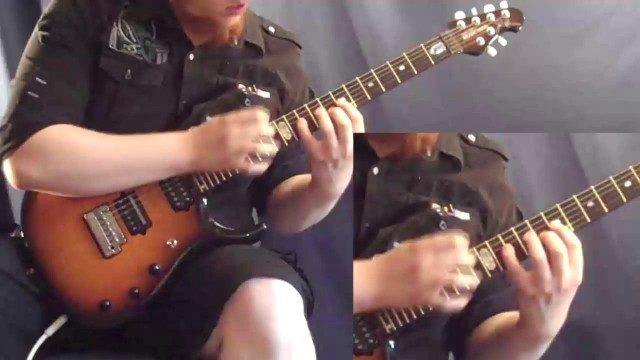Greetings Guitar Slingers!
The goal of the ”Unlocking the Fretboard” tutorial is for you to be able to break free from the stereotypical ”box”-playing and be able to have our playing and ideas flow all over the neck.
Before launching head on into this tutorial I want to to review the order in which my improvisational tutorials are to be gone through.
Timing and Note Value Alteration
First we will have a look at the standard blues-boxes, that you probably all have come across. Below you will see the A blues-scale. It is labeled the blues-scale because I have included the b5 in there. In this way we will now have 6 notes per octave. This is the reason we do not label it a pentatonic scale, since ”Penta” means ”5”, and all pentatonic scales only have 5 notes per octave, no more, no less.
With this said, this scale is commonly labeled “A minor pentatonic blues scale”, regardless of what is theoretically ”Correct”. These boxes probably looks familiar to you. I have made the root notes (A) blue, and the b5 (Eb) red. More on the reason for this later.





Then here we see the 6 notes of the A minor blues scale not arranged in boxes anymore, but as they are positioned all over the neck. THIS is where we want to go, to be able to see the pentatonic and blues scales not as individual boxes, but as NOTES, that are accessible all over the neck.

How then, will this benefit your playing practically? You will no longer be stuck in patterns or licks that you play in the same position and same keys all the time. You will be able to play CONCEPTUALLY, making use of any idea, in any key all over the neck, flowing in any direction, up, down, diagonally, you name it. Does this sound good?? I thought so.
So how do we get from A to B? How to we change our perspective from being locked into boxes, and transform it into true Fretboard Freedom? Well, there are a few checkpoints we need to go through in order to get there, and I will walk you through them all!
Checkpoint 1: To realize that scales are not inherent patterns, but rather just a certain selection of notes that be played in any form or order. Sounds self-evident right? Easier said than done though. You need to know where all the notes of a scale are located on the fretboard. This is one reason why I have marked the root notes in Blue, this is the place to start.
Checkpoint 2: Let the patterns and boxes work to your advantage, don’t get caught up in them. Any guitarist or musician improvising is always using a mix between “finger-memory” that is running scales, licks and patterns, and playing by ear. The key is to have a strong enough ear to be able to play by it, and also a strong ear for timing and note value alteration to be able to vary your playing.
For example, whenever landing on a root note above, you will always be able to play the pattern starting on this note provided you have learned them. It is when you take it a step further that things get interesting.
Checkpoint 3: Timing, rhythmical variation and note choice are also key element in breaking out of the lick-based box playing. Timing and rhythmical variation are a tutorial of its own, but we will cover note choice.
Checkpoint 4: Scalar freedom. One part of the Fretboard Freedom tutorial will deal with Scale Substitution, and Scale Superimposition. This is the ability to see any scale at any time, wherever you are on the fretboard? Does this sound unobtainable? It isn’t, but keep your pants on until we get there. First you must have passed all the other checkpoints. One step at a time, or the foundation you will build in this tutorial will be brittle and you will crash and burn as soon as you try your wings. Remember Icarus?
This ends the introduction to this tutorial, let’s get busy!!





















